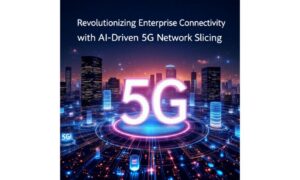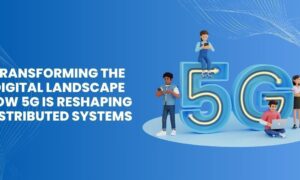In today’s fast-paced world, technological advancements have been pushing the boundaries of innovation in various industries, and the automotive sector is no exception. The advent of 5G technology has opened up a world of possibilities, enabling remarkable changes in the way we interact with and experience our vehicles. This article delves into the future of connectivity, exploring how 5G is revolutionizing advanced automobile technology, making our cars smarter, safer, and more efficient.
Introduction
The 5G Revolution
Before delving into the impact of 5G on the automotive industry, it’s crucial to understand the basics of 5G technology. 5G, or the fifth generation of wireless technology, represents a significant leap forward from its predecessor, 4G. It offers remarkable improvements in terms of speed, latency, and connectivity, making it the ideal foundation for the digital transformation of various sectors, including automotive.
Lightning-Fast Connectivity
One of the most notable features of 5G is its incredible speed. With data transfer rates up to 100 times faster than 4G, 5G can deliver information almost instantaneously. This level of speed is a game-changer for automobiles, as it enables real-time communication between vehicles, infrastructure, and other devices. Imagine downloading a high-definition movie in a matter of seconds while your car updates its software wirelessly.
Ultra-Low Latency
Low latency is essential for applications where real-time responses are critical. In the context of advanced automobile technology, this means quicker reaction times for autonomous vehicles and improved safety. 5G’s ultra-low latency, often measured in milliseconds, ensures that vehicles can communicate with each other and with traffic management systems without delay, significantly reducing the risk of accidents.
Enhanced Connectivity
The improved connectivity of 5G is not limited to speed and latency; it also offers a higher connection density. This means that 5G can support a vast number of devices simultaneously. In an urban environment where multiple vehicles and infrastructure systems are connected, 5G’s enhanced connectivity ensures that there is no congestion or interruption in communication.
Network Slicing
5G’s network slicing capability allows the creation of virtual networks tailored to specific applications. In the context of automobiles, this means that different services, such as infotainment, navigation, and vehicle-to-vehicle (V2V) communication, can each have their dedicated network slices. This ensures that critical applications receive the necessary resources and priority, guaranteeing consistent performance.
Impact on Advanced Automobile Technology
The integration of 5G into the automotive industry is revolutionizing the way we perceive and interact with our vehicles. Here are some key areas where 5G is making a substantial impact:
Autonomous Driving
Autonomous driving, often referred to as self-driving cars, represents a significant advancement in automobile technology. 5G plays a pivotal role in enabling these vehicles to navigate safely and efficiently. The combination of high-speed data transfer and low latency allows autonomous vehicles to process vast amounts of information in real-time, making split-second decisions that enhance safety and reliability.
Vehicles equipped with 5G can communicate with each other and with roadside infrastructure, such as traffic lights and sensors. This communication network enables a level of coordination that is essential for avoiding accidents and optimizing traffic flow. For instance, a car approaching an intersection can receive real-time information from nearby vehicles and traffic management systems, allowing it to make informed decisions, such as when to stop or proceed.
Vehicle-to-Everything (V2X) Communication
Vehicle-to-Everything (V2X) communication is a key component of the connected vehicle ecosystem. It encompasses communication between vehicles (V2V), vehicles and infrastructure (V2I), vehicles and pedestrians (V2P), and more. 5G’s low latency and high-speed connectivity are ideal for V2X communication, enabling vehicles to share information with each other and with the surrounding environment.
For example, V2V communication can alert a vehicle to an accident or obstacle ahead, even if it’s not within the driver’s line of sight. V2I communication can provide real-time traffic data, optimizing routes and reducing congestion. V2P communication can warn drivers of pedestrians crossing the road, enhancing safety for all road users.
Infotainment and In-Car Connectivity
5G brings a new dimension to in-car infotainment and connectivity. With 5G’s lightning-fast speeds, passengers can enjoy seamless streaming of high-definition content, immersive gaming, and real-time video conferencing from the comfort of their vehicle. Additionally, over-the-air (OTA) updates for vehicle software and entertainment systems become effortless with 5G, ensuring that your car is always up to date with the latest features and security patches.
Furthermore, the ability to connect multiple devices within the vehicle without any lag or interruption enhances the overall in-car experience. Passengers can stream music, watch videos, and engage in various online activities without experiencing slowdowns or buffering.
Enhanced Safety
Safety is a paramount concern in the automotive industry. 5G’s low latency and real-time communication capabilities significantly enhance safety features in vehicles. Here are some ways 5G is contributing to safer driving:
Collision Avoidance: 5G-equipped vehicle sensors can detect and communicate with nearby vehicles to prevent collisions by applying brakes or steering away from danger.
Emergency Services: 5G enables rapid transmission of crash details, like location, impact severity, and vehicle data, to enhance emergency response, potentially saving lives.
Traffic Management: With 5G, real-time traffic systems can optimize signals, reroute traffic, and enhance flow, reducing congestion and accidents.
Smart Cities Integration
5G’s impact on advanced auto tech extends to smart cities, where connected vehicles, infrastructure, and data create efficient urban environments. Smart traffic lights optimize traffic flow, reducing congestion, saving time, and cutting fuel emissions. Smart parking systems locate spaces, reducing circling time.
Conclusion
5G is revolutionizing the automotive industry with lightning-fast speed, low latency, enhanced connectivity, and more. It enables autonomous vehicles, V2X communication, improves safety, and integrates with smart city initiatives, shaping the future of automotive connectivity.



































